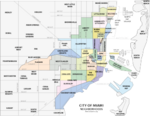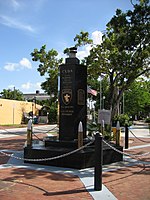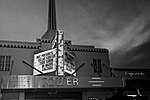Little Havana

Little Havana (Spanish: Pequeña Habana) is a neighborhood of Miami, Florida, United States. Home to many Cuban exiles, as well as many immigrants from Central and South America, Little Havana is named after Havana, the capital and largest city in Cuba. Little Havana is noted as a center of social, cultural, and political activity in Miami. Its festivals, including the Calle Ocho Festival, Viernes Culturales/Cultural Fridays, the Three Kings Parade and others, have been televised to millions of people every year on different continents. It is also known for its landmarks, including Calle Ocho (SW 8th Street/Tamiami Trail), and its Walk of Fame (for famous artists and Latin personalities, including Celia Cruz, Willy Chirino, and Gloria Estefan), the Cuban Memorial Boulevard, Plaza de la Cubanidad, Domino Park, the Tower Theater, José Martí Park, the Firestone/Walgreens Building, St. John Bosco Catholic Church, Municipio de Santiago de Cuba and others. Little Havana is the best known Cuban exile neighborhood in the world. It is characterized by its street life, restaurants, music and other cultural activities, small business enterprises, political passion, and great warmth among its residents.In 2015, Little Havana was included in the National Trust for Historic Preservation's annual list of 11 Most Endangered Places. In 2017, the Trust declared it a national treasure.
Excerpt from the Wikipedia article Little Havana (License: CC BY-SA 3.0, Authors, Images).Little Havana
Southwest 12th Avenue, Miami
Geographical coordinates (GPS) Address Nearby Places Show on map
Geographical coordinates (GPS)
| Latitude | Longitude |
|---|---|
| N 25.772577777778 ° | E -80.214588888889 ° |
Address
Southwest 12th Avenue 99
33130 Miami
Florida, United States
Open on Google Maps






